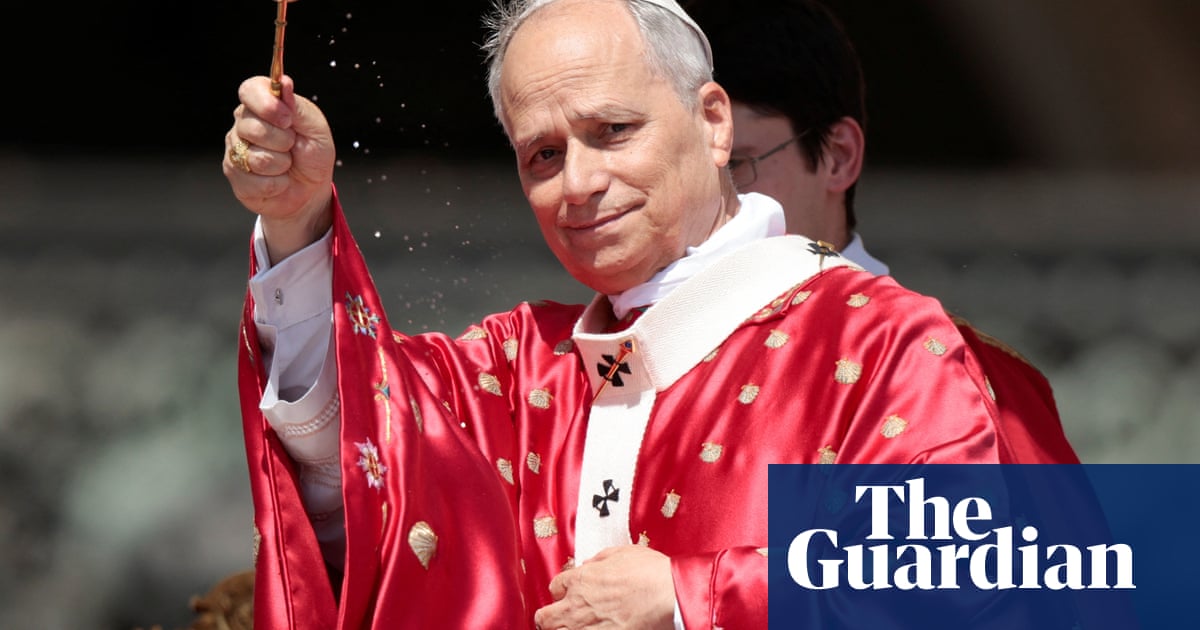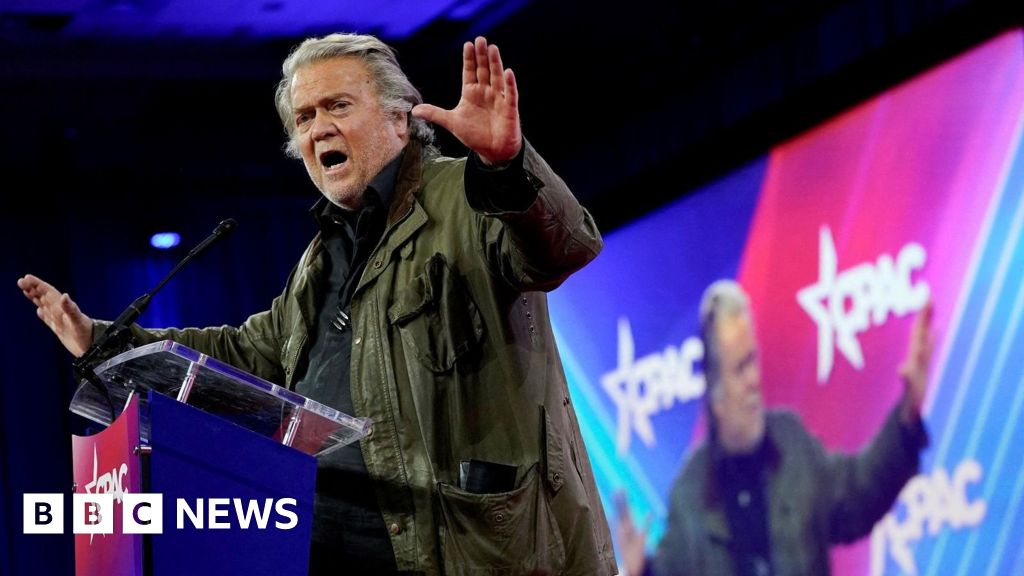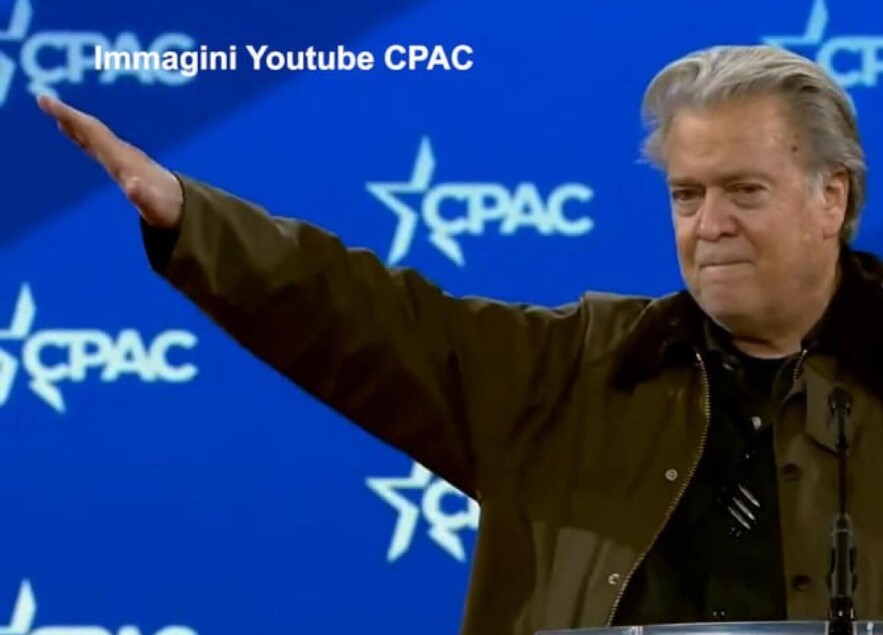Historian Jon Meacham referred to the course of American history as “slow, often unsteady steps forward.” These hesitant steps, taken over generations, do not form a simple, predictable path. Instead, they come together like the movements of what Meacham calls an “uneven symphony,” with periods of both content and discontent but always progressing. In this way, Meacham’s metaphors together capture the complex and unpredictable rhythm of America’s story.
In the most recent Papal conclave in May 2025, the cardinal-electors of the Roman Catholic Church surprised the entire Catholic world with the election of an American as the Supreme Pontiff of the Church. They elected Robert Francis Prevost, a Chicago-born cardinal, who subsequently took the papal name of Leo XIV. The election of an American to a position widely seen as carrying significant ethical authority stands in stark contrast to the style of leadership represented by the incumbent US President, Donald Trump.
At this moment in America’s story, both its domestic identity and its international posture seem to hang in the balance. While the concept of “American” leadership faces significant internal challenges and debates, the 2025 papal conclave adds further complexity to the nation’s evolving identity.
On one side stands President Trump, whose approach disrupts traditional expectations. On the other, Pope Leo XIV embodies a very different vision of American influence. Each offers a distinct interpretation of what it means to lead, and more subtly, what American identity really is. Their differences are not merely stylistic, but philosophical. The contrast between President Donald Trump and Pope Leo XIV offers Americans two visions: one of America’s better angels and the other of America's darker impulses. In this unfolding, uneven symphony of values, voices and visions, the country faces a defining decision. Which theme will provide the backdrop for the “uneven symphony” of the American story?
American history often unfolds in a cyclical manner. The “uneven symphony” in American history refers to the fact that each movement toward justice or equality is frequently accompanied by a corresponding backlash rooted in fear and exclusion. This cyclical pattern reveals the nation’s ongoing tension between its professed ideals of liberty, justice and democracy and the complex, often contradictory realities that have shaped its development throughout history.
Take the Reconstruction period in the aftermath of the victory of Union forces in the Civil War. President Ulysses S. Grant’s efforts at “reconstructing” the South had the ideal of promising integration for formerly enslaved individuals, yet it was quickly countered by the emergence of the Ku Klux Klan and the institutional entrenchment of Jim Crow laws. The mid-twentieth century Civil Rights Movement achieved landmark victories, including the passage of the Voting Rights Act of 1965. However, these gains were immediately met with both overt resistance from Southern politicians like George Wallace and more systemic forms of opposition that continue to manifest in modern voter suppression tactics.
These episodes in American history of regression and progress are not anomalies or signs of democratic failure. Rather, they represent the inherent tensions within democratic systems, which are prone to fluctuation and conflict. Meacham’s perspective rejects any nostalgic idealization of a past “golden age,” emphasizing instead the enduring interplay between aspiration and anxiety as fundamental to America's journey.
The struggle for American identity is a competition between competing moral forces. This tension doesn’t merely shape individual events, but is instead an integral part of American identity. America’s story is often a competition between hope and fear, inclusion versus exclusion, and finally humility and hubris.
Hope is the primary driving force of progress throughout American history. Hope has animated movements that strive to expand the circle of rights and opportunity, including the suffragists and civil rights activists that aspired to the higher ideals of America. Hope echoed the nation's ostensible founding aspiration that liberty and justice be made real for all.
But progress rarely moves in a straight line. Fear often rushes in where hope dares to lead. It has powered the existing reactionary movements and authoritarian currents displayed by the Trump administration. Fear gives rise to strategies wielded to halt change and reassert control.
The struggle between inclusion and exclusion follows a similar rhythm. Leaders like Martin Luther King Jr. called upon the moral promise of the American creed, urging the country to live up to its foundational commitments. Yet, each attempt to broaden the nation’s moral reach has been met with efforts to close the gates, such as the current “America First” policy.
America First is yet another effort to define Americanness narrowly and defensively, in the process casting difference as danger, and unity as threat. At the core of these contests lies a deeper moral divide: humility versus hubris. History looks more favorably towards those individuals who recognized the fragility of democracy and the weight of their responsibilities. These were figures who placed long-term principle above short-term gain. In contrast, hubris manifests in those who pursued power for its own sake, who mistook popularity for righteousness. In the course of the American story, these tensions are not merely historical footnotes. They are the chords of the American symphony, dissonant yet enduring. The measure of an American generation lies not in whether it eradicates darkness, but in whether it chooses to act with moral courage through the darkness.
Nothing is perhaps more central to American history than moral authority. Moral authority and leadership provide the fulcrum upon which America’s moral direction turns. Whether the “better angels” of human nature prevail depends not only on public will but on the decisions, temperaments and values of those entrusted with power. Good leadership can expand the promise of democracy. Poor leadership can hollow it out. Elected American leaders have historically used their platforms not just to govern, but to guide and lift public consciousness and build a broader sense of purpose. Equally critical is a leader’s ability to shape national narratives. Figures like Thomas Jefferson and Abraham Lincoln viewed America not as a finished project but as a nation always in the making. Their rhetoric framed failures not as final but as challenges to be overcome, instilling a belief in renewal rather than resignation to defeat.
American leadership is thus, Meacham notes, a combination of three essential traits: curiosity, which invites diverse perspectives; humility, which allows for the admission of error; and empathy, which broadens the circle of concern beyond one's immediate base.
Cardinal Prevost, now Pope Leo XIV, emerges as a moral leader whose life and future papacy are deeply informed by a convergence of cultural heritage, pastoral experience and theological conviction. Leo XIV’s early life positioned him at the intersection of America’s industrial pragmatism and the rich spiritual tradition of Roman Catholicism. His ordination as an Augustinian priest in 1982 marked the beginning of a vocation grounded in service and intercultural engagement. His years in Peru, where he was immersed in the realities of poverty, seminary formation and Indigenous advocacy, played a decisive role in shaping his pastoral identity. In his time as Archbishop in Peru and the Vatican’s Prefect for the Dicastery for Bishops, Leo XIV earned recognition as a consensus-oriented figure, committed to synodal governance and pastoral attentiveness rather than rigid dogmatism.
Pope Leo XIV’s motto, In illo Uno unum (“In Christ, we are one”), reflects the ideal of a unifying narrative that transcends tribalism. Pope Leo XIV embodies humility, empathy and hopeful inclusion. His early days in the papacy demonstrated these ideals not merely in rhetoric, but in symbolic as well as substantive acts. His choice to deliver his inaugural address in Italian and Spanish, coupled with his decision to walk among pilgrims instead of accepting the customary papal limousine, served as immediate affirmations of servant leadership and accessibility. Leo XIV’s moral clarity is particularly evident in his 2025 inauguration homily, where he denounced global economic inequality and the rise of authoritarian governance. His appeal to Catholics to act as a “leaven of harmony” underscores his vision of faith as an active, reconciliatory force in a divided world. In rearming the principles of the Second Vatican Council and praising Pope Francis’s encyclical Evangelii Gaudium, he reaffirmed the Church’s role as a “missionary institution” committed to listening and engagement, not just proclamation.
In contrast, Donald Trump is a case study of the cyclical nature of American history. Trump’s political emergence was grounded in a narrative of grievance. He positioned himself as a political outsider, claiming to confront a so-called corrupt establishment and pledging to restore a nostalgic vision of American greatness. Through campaign slogans like “Make America Great Again” and “America First,” he channeled discontent over globalization, demographic shifts, and evolving cultural norms. His appeal to the “forgotten” white working-class voter reflected a deliberate strategy of populist mobilization, rooted in economic anxiety and cultural unease. His administration’s signature policies, such as the travel bans on Muslim-majority countries, the enforcement of family separations at the U.S.-Mexico border, and the imposition of tariffs on Chinese imports were emblematic of a politics shaped more by exclusion and confrontation than by coalition and compromise. Trump’s leadership style reduces complex challenges to binary oppositions: citizen versus outsider, patriot versus traitor, tradition versus change. It also involves the erosion of institutional norms, where courts, media, and regulatory bodies are portrayed as enemies of progress rather than guardians of democratic accountability.
Donald Trump’s model of leadership, defined by transactional calculation and rhetorical bravado, presents a stark contrast to Pope Leo XIV’s vision of moral stewardship and global solidarity. Trump operates within a framework where strength is measured by dominance, and alliances are subject to negotiation rather than commitment and principle. His conception of national identity centers on sovereignty and self-interest, casting America as a fortified power that must guard its borders against external influence. In contrast, Pope Leo XIV embraces a leadership ethic grounded in humility and service. Rather than positioning America as a bastion to be defended, he imagines it as a bridge, an agent of connection, capable of fostering cooperation across ideological and national boundaries. For Leo XIV, strength lies not in isolation but in shared responsibility. His appeal to collective dignity and moral reciprocity reflects a theology of inclusion, one that resists the fear-based logic of division.
This divergence encapsulates a broader philosophical rift: Trump’s nationalism privileges exclusion as a means of preservation, while Leo XIV’s pastoral leadership advances unity as a path to renewal.
The Choice Ahead
Pope Leo XIV and Donald Trump embody two fundamentally divergent models of leadership which also presents two conflicting visions of American identity. Leo’s call for a Church that “smells like the sheep” signals a leadership rooted in service, empathy and moral clarity. In this, Leo aligns with Jon Meacham’s conception of leaders who elevate the “better angels” of the American story — those who govern not for personal gain, but for the collective good. By contrast, Donald Trump’s “America First” platform offers a markedly different moral and political vision. Grounded in nationalist rhetoric and exclusionary policies, Trump’s leadership style channels what Meacham terms the nation’s “darker impulses.” Fear, grievance and division become tools of governance, not obstacles to overcome. His emphasis on sovereignty over solidarity, on strength over compassion, presents America not as a bridge to the world but as a fortress turned inward. In this vein, the juxtaposition between Leo XIV and Trump reveals a deeper contest over the meaning of leadership in the twenty-first century.
American identity, as Jon Meacham suggests, is not a settled creed but an evolving argument. It is an unfinished symphony shaped by the choices of its leaders and the convictions of its people. The narrative of American history is constantly rewritten, not in consensus but through conflict, contrast and renewal. In this dynamic, Pope Leo XIV and Donald Trump stand as two contrasting answers to to Abraham Lincoln’s enduring question: whether a nation “so conceived and so dedicated can long endure.” Leo’s call for humility and global solidarity challenges Americans to see their country as part of a broader human family, while Trump’s nationalism appeals to those who prioritize sovereignty over shared destiny.
Together, these two figures illuminate the choice before the nation. Meacham’s metaphor of an “uneven symphony” captures the tension: a composition in which the melody of hope and justice is often disrupted by discordant notes of fear and exclusion.
Despite the value and influence of the country’s leaders, however, the future of America will undoubtedly also be determined by the ideals, convictions and actions of the American people. Whether the next movement brings harmony or dissonance depends not just on who leads, but on which ideals Americans choose for their own and for their country.
In reality, the preservation of American democracy depends not on lofty discourse or ideological aspiration, but on the active engagement of its citizens. History illustrates this with clarity. During times of national strain, ordinary individuals have often demonstrated remarkable courage, accepting personal risk to confront injustice. At other times, however, widespread inaction has allowed that same injustice to grow unchecked, sustained by the silence of the majority.
The current political and civic climate created by the Trump administration demonstrates a similarly critical juncture. If citizens fail to undertake even the most basic democratic responsibilities—such as exercising their right to vote—if they permit misinformation to circulate within their communities, or disregard the necessity of transparency and accountability in governance, the democratic structure will gradually erode. And when action becomes imperative, if they hesitate to engage — such as through protest, legal recourse, or organized advocacy — democracy will not be overthrown in a single act. It will deteriorate quietly, the consequence not of force, but of collective neglect. Consider France, whose revolution is often seen as the sequel to the American revolution. Beneath its institutions lies a quiet memory of 1789, a warning etched into the minds of its leaders: the people may rise. The United States lacks such an implicit check. What it needs now is a citizenry as vigilant as it is vocal. This is not just a matter of politics, but of identity.
On the eve of leaving office in 1797, George Washington believed that ‘the good sense of our countrymen will guard the public weal against this and every other innovation and that, although we may be a little wrong now and then, we shall return to the right path with more avidity."
This Washingtonian call for action is more relevant today. Whether the nation renews itself or continues to fracture depends on whether Americans, one by one, decide that the fight for democracy is not someone else’s job. It’s theirs.







